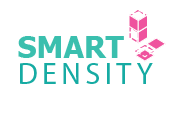Vienna’s Social Housing Model Targets the Middle Class
Guest Speaker:
Maria Vassilakou, the Former Deputy Mayor of Vienna, Austria
5 Key Takeaways:
- Vienna’s Social Housing Model Targets the Middle Class
Providing well-rounded social and public housing options has been a priority in Vienna for over 100 years. Vienna is a rapidly growing and diverse city, and its sustained focus on housing is the primary reason the City has been able to accommodate this growth.
Vienna does not view social housing as something that needs to be built quickly and this is reflected in the quality of housing developments. In the North American context, we often think of social and public housing as something that exclusively serves low income households. This is not the case in Vienna as the city is focused on providing residents from all socio-economic backgrounds with a place to call home.
Vienna is designed for everyone, and there are grants and subsidies in place to help low income households thrive. However, what is unique about Vienna is that social housing primarily targets middle class residents. This is possible through the City’s subsidized rent scheme, a subsidized ownership scheme, and a collaborative housing model.
2. The Focus is on Building Complete Communities, in Rental Models
The emphasis is not on the quantity of housing units, but is on the quality of community that this housing provides. The City focused on creating entire urban quarters that provide residents with a multitude of amenities and services required for everyday life. In addition to architectural quality, these urban quarters offer housing, schools, libraries, and green spaces.
Vienna has a very even socio-economic fabric because of its focus on creating complete communities. There are no areas that are exclusive to the upper class, and no areas that are exclusive to the lower class. The three main factors that make this possible are low land cost for developers, construction that is subsidized by the city, and entry fees paid by tenants. The precedent for high quality social housing was established decades ago, and remains high city wide.
3. Active Land Policies Provide a Solid Framework
Vienna has a very active land policy and has put a lot of effort into providing affordable land for subsidized construction. Two-thirds of all development that exceeds 150 residential units MUST be dedicated to providing subsidized housing. Along with these subsidized housing requirements, the City also prioritizes the integration of mix-use development. Vienna requires new developments to provide a range of mix-use spaces such as shops, offices, and green spaces because it benefits both new and existing residents.
Something unique about Vienna is that there is a fund for housing and urban renewal that is city-owned. This fund is essentially the beating heart of the City’s social housing model as it manages the land policy as well as all subsidies for residents.
There are also housing developer competitions in Vienna that require all proposals to meet a range of requirements for new development. Considerations such as social sustainability, architecture, economic value, and ecology are all major components of successful development in the City.
4. A Strong and Transparent Finance Model
Vienna is a highly affordable city with over 62% of its citizens living in public or social housing. There is very little individual ownership because the subsidized housing options are so appealing and available. Vienna invests more than 500 million Euro a year into affordable housing for its residents; the reason this number is so high is the strong finance model that the City is built on.
Viennas finance model is entirely based on revolving funds, and provides ample opportunity for both individuals and organizations to receive grants and low-interest loans. To summarize, the government collects 1% of residents’ annual income and re-allocates it to building subsidized housing. In addition to this 1% tax, the City also provides low interest loans to non-profit developers to make continuous development more realistic. Vienna also offers individual grants for low income households, this aids those in need while providing them with the opportunity to increase their quality of life in the long term.
5. High Density and Quality of Life Go Hand in Hand
Vienna has been ranked number 1 for liveability on a global scale for several consecutive years. This comes as no surprise considering quality of life is the main driving force in the City’s urban planning and design. Vienna is a city built around people; providing space for residents to work, play, and live in the urban context is the reason the city is so vibrant and dense.
Vienna’s 2050 Smart City framework is built on quality of life, innovation, and resource efficiency. How does Maria suggest we achieve these targets? By providing high-density communities that do not sacrifice one’s safety, connectivity, or access to resources and open space.
